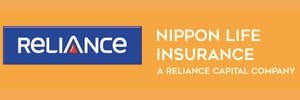While planning for the top investment option for retirement, key factors that require attention are inflation (silent killer of your funds or savings), rising cost of living and anticipated higher medical treatment costs in future in absence of any social security schemes from the government.
In your golden years, you may wish to travel, indulge in hobbies or past passions and spend more money on your grand-children. All this requires careful planning and selecting top investment option for retirement so that you can live a financially stable self-dependent stress-free life in your golden period. Asset allocation plays a major role in retirement planning and one needs to select investment avenues and instruments carefully.
For this, let’s review the following investment options for pre-retirement phase where we earn or accumulate our funds and post-retirement phase covering allocation or distribution of corpus funds.
During pre-retirement phase
wealth creation and accumulation phase, as a thumb rule one should avoid withdrawal or liquidity options in investment avenues. Various investment options are:
-
The National Pension System (NPS):
Launched in 2009, NPS is a voluntary, defined contribution government pension scheme and one of thetop investment option for retirement, which is open to all individuals across the country. NPS is administered on behalf of the government by the Pension Fund Regulatory and Development Authority India (PFRDA). NPS also provides tax benefit in the form of deduction under section 80CCD(2). It is mandatory to purchase annuity plan worth 40% of the corpus accumulated through NPS at the time of retirement.
-
Employee’s Provident Fund (EPF):
EPF is another top investment option for retirement, available to all salaried employees. This fund is maintained and overseen by the Employees Provident Fund Organisation of India (EPFO). Withdrawals from Employee Provident Fund are completely exempt from income tax after five years of continuous service. The rate of return keeps changing and is decided by the central board of trustees of the fund every year.
-
Public Provident Fund (PPF):
PPF is the most popular government backed scheme with a fixed rate of return and a top investment option for retirement, traditionally better than bank FDs. In PPF, the money is locked for 15 years and the account can be extended beyond 15 years in a lot of 5 years. PPF is exempted from tax at both investment and maturity stages under Section 80C and Section 10 (10D) of the Income Tax Act, respectively.Recently government has reduced the interest rate on PPF to 8.1% for the period April’2016 to June’2016(sharp cut from 8.7% over the last year) and also decided that the rates will be reviewed now onwards on a quarterly basis, not annually. This has made PPF less attractive.
-
Equities:
Experts discouragethis as a retirement planning tool but equities can be a top investment option for retirement, provided you start early. No other investments can match the returns of investing in equity provided you have a long term perspective. Invest in equities only when you have a long term horizon say at least of 10 years. Periodic reviewing of your portfolio is also required depending on changes in the market conditions and in case you are not getting desired results.
-
Tax Free Bonds:
Tax Free Bonds are long term fixed income investments issued either by government approved institutionsor government and are typically of the duration for 10 to 15 years. The main benefit is that the interest on these bonds in not taxed, making this a top investment option for retirement. Ratings of these bonds should be checked before investing.
-
Mutual funds:
One can invest in pure equity based or balanced mutual funds based on his age and risk profile. In case you are starting early for retirement planning, then equity based funds are atop investment option for retirement as you have a longer time horizon and equities tend to outperform most assets over long periods. A simple and convenient way is to invest in a systematic investment plan (SIP) in order to balance the unpredictable market movements. Balanced funds, or equity-oriented hybrid funds, are safer than purely stocks/equity mutual funds. In Balanced funds, up to 35% are allotted for government and corporate bonds. One can start moving towards debt when your retirement is 5 years away by investing say 20% corpus each year in debt funds, which invest in government and corporate bonds.
-
Pension Unit Linked Insurance Plans (ULIPS):
Various Life Insurance Companies in India offer market-linked Pension ULIPs. These plans are suitable for risk-taking investors given the volatility of equities. As over the longer term, equities tend to outperform other asset classes, Pension ULIPs provide a better chance of accumulating a larger retirement corpus. Pension ULIPs have a minimum lock-in of five years.
-
Money Back Policy:
Ideal for people who want a guaranteed return on their investments and are looking for regular payouts as well as an insurance cover for themselves. The money back plans can be a good way to plan for a regular periodic income and large expenses in the future such as retirement funds.
Invest ₹10K/Month YOU GET ₹1.5 LAKHS* MONTHLY PENSION View Plans
Invest ₹7K/Month YOU GET ₹1 LAKHS* MONTHLY PENSION View Plans
Invest ₹5K/Month YOU GET ₹75 THOUSAND* MONTHLY PENSION View Plans
standard T&C Apply *
You may also like: Present Value of Annuity | Types of Annuity
During post-retirement phase
following are the various retirement plans that one can use to allocate corpus built during working years, and ensure a recurring stream of income:
-
Monthly Income Schemes (MIS):
MIS offered by post-office and Banks are similar to bank fixed deposits, but with monthly interest payments making it a top investment option for retirement. The current Post-Office MIS interest rate is 7.8% w.e.f April 01, 2016 to June 30, 2016.
-
Reverse Mortgage:
A reverse mortgage loan will help you unlock the value of your home to generate a regular income or an alternative retirement corpus (as one-time payment) from lenders. Typically loans of up to 40-90% of the market value of the property are provided under this scheme.
-
Insurance Annuity or Pension Plans:
One can also invest a lump sum amount and take a pension or annuity plan from insurance companies for regular income by deciding the frequency and quantum of payouts.
-
Senior citizens saving scheme (SCSS):
SCSS is one of the safest and top investment option for retirement. Current rate of interest on SCSS is 8.6% w.e.f April 01, 2016 for a period of 5 years. Investment in SCSS qualifies for deduction under Section 80C.
-
Bank FDs:
Bank FDs of different tenures are safe and secure form of investment and also serve the purpose of meeting short-term liquidity or requirement of funds in case of an emergency
In the end, one advice is to monitor and regularly review your retirement investment plans and analyze the performance of your investment portfolio. Periodic reviewing can only ensure that one is on track to meet the desired retirement goals.



































